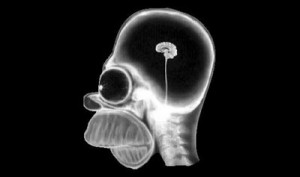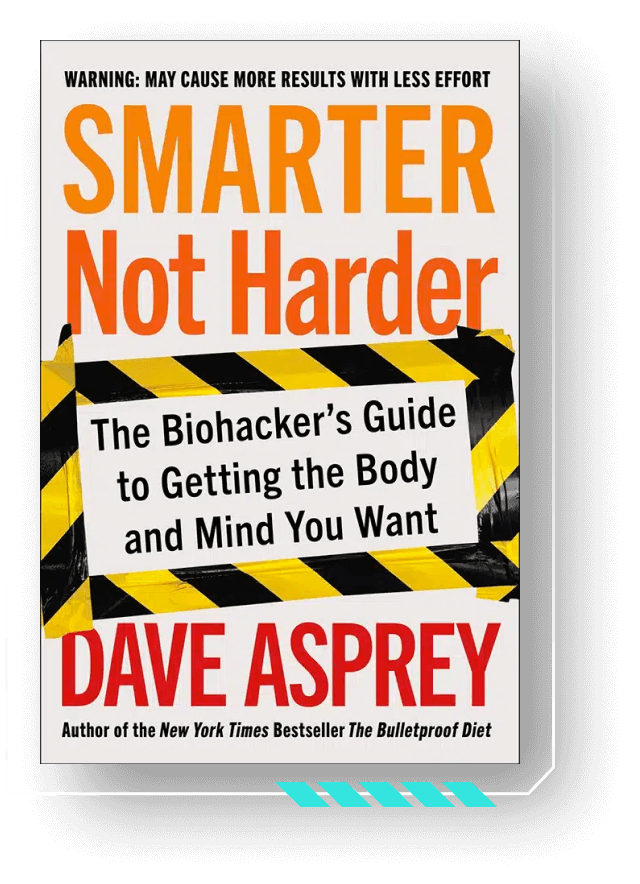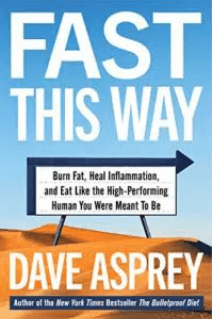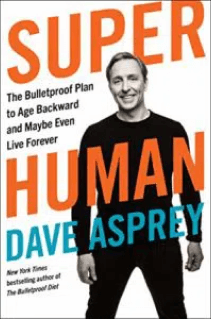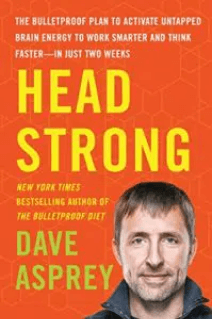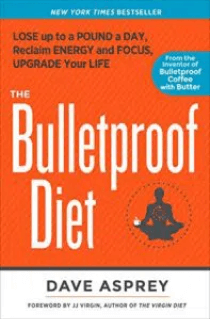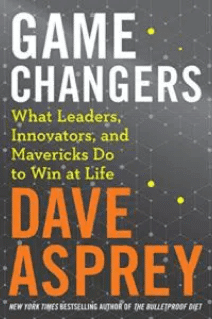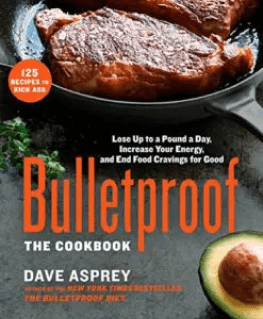
If your heart jumps at the thought of a randomized clinically controlled trial examining the effect of different macronutrients on gene expression – you’re in luck. We found a gold mine of a study on the new science of epigenetics. This is of more than passing interest to me because Wiley is publishing my book at the end of 2012 on how to use epigenetics to naturally improve your fertility and pass on healthier genes to your kids.
If you just want to know what to eat to be healthier, and you’re tired of diets that don’t work for the long term, this is right up your alley too.
It’s taken me more than 15 years of work – good old fashioned research combined with biohacking and self-experimenting – to figure out the Bulletproof Diet. Every diet claims to be supported by scientific research. Most of them are, but you can interpret a study to show almost anything. Many pseudo-science diets such as metabolic typing, the blood type diet, the Ornish diet, and other even more random diets have confused people for years.
What if there was a way to stop relying on epidemiological studies and poorly interpreted research and get a direct understanding of what your food does to you?
A study from the Norwegian University of Science and Technology has done exactly that. In one of the first studies of it’s kind, biologists tested how the macronutrient composition of food affects gene expression. Before the actual study could even begin, researchers had to perform another study to determine whether to feed the subjects a powdered diet or a whole foods diet.
Study #1: Real or Fake Food?
Because the amount of nutrients in different foods is variable (one tomato might have more antioxidants than another), the researchers needed to see how this might affect the testing. (Kudos already – lots of researchers seem to forget that the quality of soil determines what micronutrients are in food.) A small difference in this first study would mean whole foods could be used for the next trial. If there was a large difference in nutrient intake, they would use powdered food to make sure both groups ate the same thing. Kudos to the scientists for realizing that “a tomato is not a tomato” because there are dozens of variables that affect a plant’s nutrition values.
This preliminary study was important for other reasons. Many studies that show high fat diets are better are criticized because the high fat group generally consumes more omega-3’s. Omega-3‘s have numerous health promoting effects, so critics like to say “it’s all because of the omega-3‘s.” Using powdered food allowed the researchers to make sure both groups consumed the same amount of omega-3 fats. There are other problems with using powdered food, but you’ll hear about those at the end of this post.
This initial study lasted 28 days and involved 5 obese men. They ate real food and had blood tests drawn after 28 days to be used as a control. The researchers found the variability in nutrient intake was too great from eating real food. (Incidentally, this is one of the reasons supplements are a good idea. How do you know if your tomato is a high vitamin one?) The main study would use powdered food.
Study #2: Feeding Your Genes
In the main study, 32 overweight men and women ate a specially made powdered food diet. Participants were assigned at random to consume two different diets for six days. Macronutrient composition was the only difference between the two groups.
Diet #1: Current Dietary Recommendations (USDA)
65 % Carbs
15% Protein
20% Fat
Diet #2: Moderate Carb Diet
33% Carbs
33% Protein
34% Fat
Everyone ate the same amount, at the same times, in the same portions. Their diets were adjusted so they would maintain body weight.
Not Everyone Wears the Same Genes
The best part was how the researchers adjusted for individual genetic differences. There is some natural variation in gene expression between humans, which could potentially disrupt the data. If one person already had a low risk for heart disease due to their genetic expression, they could make one diet look better than another, even if the diet had no effect.
To control for this variable, all participants went on both diets (a crossover trial). Sixteen started with USRDA Diet #1, and sixteen started with moderate carb Diet #2. They ate that way for about ten days and took a one week break. For the remainder of the study, the group that consumed Diet #1 switched to Diet #2 and visa versa.
Blood tests were taken before and after each dietary intervention. Each person’s gene expression was compared to their own previous results – not the group average.
Results
The group that ate a “healthy” amount of carbohydrates (according to USDA guidelines) expressed genes that are directly involved in some of the worst modern diseases such as type 2 diabetes, cardiovascular disease, Alzheimer’s, and cancer.
“Genes that are involved in type 2 diabetes, cardiovascular disease, Alzheimer’s disease and some forms of cancer respond to diet, and are up-regulated, or activated, by a carbohydrate-rich diet.” says Berit Johansen, the lead researcher behind the study.
As Homer Simpson would say, “Doh!”
The high carbohydrate group expressed a cascade of genes that trigger inflammation. Since inflammation is a contributing factor to almost every disease, it’s safe to say a high-carb diet contributes to almost every known chronic disease. Funny enough, the Bulletproof Diet cuts inflammation in every way I can find, including cutting carbs.
The moderate carb group activated genes that stop inflammation and cardiovascular disease. A moderate carb diet also activated a gene that is commonly called the “fountain of youth gene.” This gene (FoxMB1) can renew stem cells and generate new tissue.
“It was interesting to see the reduction in genetic activity, but we were really happy to see which genes were involved. One set of genes is linked to cardiovascular disease. They were down-regulated in response to a balanced diet, as opposed to a carbohydrate-rich diet.”
There’s been a lot of talk in the blogosphere about problems with the carbohydrate hypothesis. While the idea that “carbs make you fat” is incomplete, there are still good reasons to minimize carb intake. All high-carb diets turn on the genes associated with disease, regardless of the type of carbohydrate. As this study showed, it’s directly tied to insulin levels.
“Genes respond immediately to what they have to work with. It is likely that insulin controls this arms race,” Johansen says. “But it’s not as simple as the regulation of blood sugar, as many believe. The key lies in insulin’s secondary role in a number of other mechanisms. A healthy diet is about eating specific kinds of foods so that that we minimize the body’s need to secrete insulin. The secretion of insulin is a defense mechanism in response to too much glucose in the blood, and whether that glucose comes from sugar or from non-sweet carbohydrates such as starches (potatoes, white bread, rice, etc.), doesn’t really matter.”
There are a few cultures that seem to do well on high carb diets (although always with other counterbalancing factors), but the Bulletproof Diet is about doing everything possible to minimize aging and non-productive stress on the body. Just because the Kitavans can survive on a high-carb diet doesn’t mean it’s optimal. It’s research like this that gives us more detailed clues. And the Kitavans provide clues too – even on their high carb diet, they eat more than 50% of their fat calories as saturated fat. Pay attention to that if you’re testing out carb backloading especially.
So how long does it take to fix bad gene expression from eating a high carb diet?
There’s still hope for those of you recovering from a sugar (or even worse, gluten) coma. Reducing your carb intake for just six days was enough to change gene expression in your favor. Since there are some benefits to eating a high “safe” carb meal once or twice a week, the Bulletproof Diet is not a zero carb diet.
“It took just six days to change the gene expression of each of the volunteers, so it’s easy to get started. But if you want to reduce your likelihood of lifestyle disease, this new diet will have to be a permanent change.”
Stay tuned for Part 2, which will cover the problems with the study, what conclusions may be questionable, and my summary on this amazing study!
